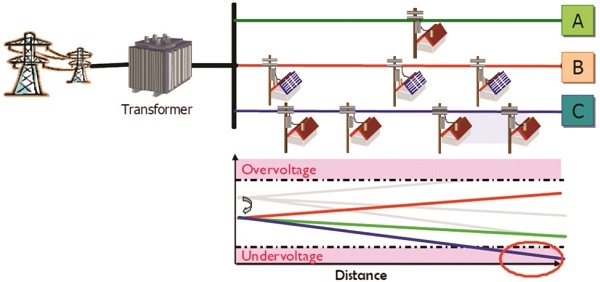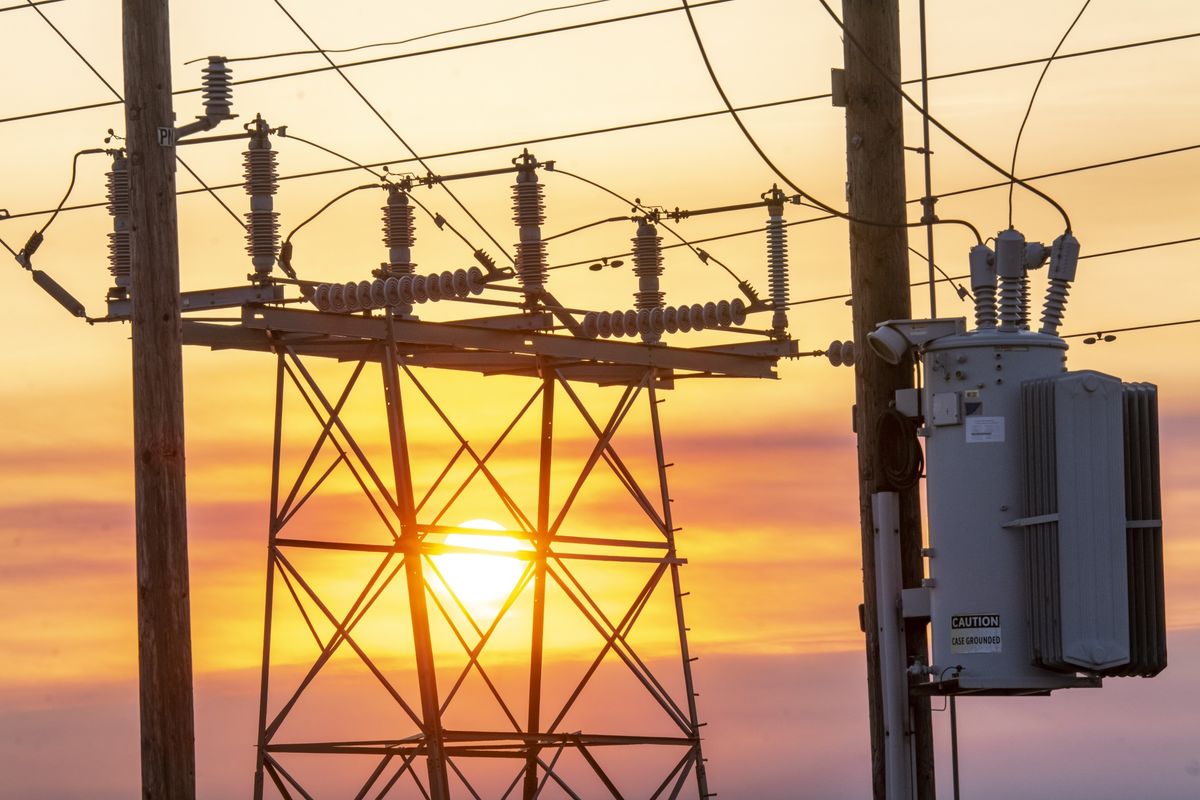
Explain the problem of grid voltage over-range and its solution
The grid voltage over-range problem has always been one of the “culprits” that affect the normal power generation of the photovoltaic system. When encountering such a problem, how to judge the cause and how to solve it?
Before understanding the cause of this problem, it is necessary to distinguish two types of faults related to the grid voltage: the grid is not connected (No AC Connection) 0 and the AC voltage is out of range (AC V Outrange)
If the grid is not connected, it simply means that there is no grid voltage. The inverter detects that the grid voltage value is “0”. The reason for this phenomenon is relatively simple. The AC side line is open. The solution is generally to use a multimeter to measure the inverter. The voltage value at each terminal between the lines to the grid connection point, such as before and after the circuit breaker.
AC voltage exceeds the range of grid voltage, but it exceeds the working voltage range of the inverter. At this time, in order to ensure the stability of the grid and the safe power supply of the photovoltaic power station, the inverter will be disconnected from the grid and stop working until the grid voltage returns to normal. The inverter will automatically reconnect and connect to the grid to generate electricity. To be sure, when the above-mentioned fault occurs, in most cases the inverter just enters the protection state without damage, and it needs to be solved by checking the external grid environment.
Causes and solutions of the AC voltage over-range problem
Let’s focus on the analysis of the cause of the AC voltage over-range problem. Since it is the range, there are low and high. You should have heard that the inverter is required to have over-voltage and under-voltage protection. This refers to this part. The low is generally called “AC under voltage”, high is called “AC overvoltage”.

01. Causes and solutions of voltage under voltage
Main reasons for grid under voltage:
1. During the peak period of electricity consumption, the station area is overloaded;
2. The power supply radius of the transformer is too long;
3. The transformer capacity is too small;
4. The diameter of the power supply line is too small.
Solution: Generally speaking, the power supply facilities cannot keep up with the demands of the people’s living standards. Changing the wires and increasing the capacity of the transformer is a permanent solution.
Relatively speaking, there are fewer cases of under-voltage problems, and over-voltage phenomena are more common, which has a certain relationship with the inverter.
02. Reasons and solutions for grid overvoltage
Main reasons for grid overvoltage: 1. The installed photovoltaic capacity of the same area is too large and the consumption utilization rate is low; 2. Multiple single-phase inverters are integrated into one-phase live wire; 3. Inverter to grid connection point cable The wire diameter selection is unreasonable; 4. The grid connection point is far away from the transformer in the station area.
solution:

1. Check whether the terminals of the AC outlet of the inverter are loose, resulting in an increase in line resistance;
2. The distance between the inverter and the grid connection point should be as short as possible. When the distance cannot be changed, the diameter of the photovoltaic AC cable should be thickened appropriately;
3. When there are multiple inverters connected to the grid, the cable diameter should be reasonably selected according to the current after the convergence;
4. The grid connection point is as close as possible to the transformer in the station area;
5. Concentrated points of multiple single-phase inverters are connected to the grid as evenly as possible to the three-phase live wire, or choose 400V three-phase grid-connected inverters;
6. Power grid transformation: increase the specifications of power grid transmission cables and increase the capacity of transformers;
7. Communicate with the inverter manufacturer and properly adjust the adaptability range of the inverter output voltage after obtaining the permission of the grid company.
The grid voltage over-range problem has always been one of the “culprits” that affect the normal power generation of the photovoltaic system. When encountering such a problem, how to judge the cause and how to solve it?
Before understanding the cause of this problem, it is necessary to distinguish two types of faults related to the grid voltage: the grid is not connected (No AC Connection) 0 and the AC voltage is out of range (AC V Outrange)
If the grid is not connected, it simply means that there is no grid voltage. The inverter detects that the grid voltage value is “0”. The reason for this phenomenon is relatively simple. The AC side line is open. The solution is generally to use a multimeter to measure the inverter. The voltage value at each terminal between the lines to the grid connection point, such as before and after the circuit breaker.
AC voltage exceeds the range of grid voltage, but it exceeds the working voltage range of the inverter. At this time, in order to ensure the stability of the grid and the safe power supply of the photovoltaic power station, the inverter will be disconnected from the grid and stop working until the grid voltage returns to normal. The inverter will automatically reconnect and connect to the grid to generate electricity. To be sure, when the above-mentioned fault occurs, in most cases the inverter just enters the protection state without damage, and it needs to be solved by checking the external grid environment.
Causes and solutions of the AC voltage over-range problem
Let’s focus on the analysis of the cause of the AC voltage over-range problem. Since it is the range, there are low and high. You should have heard that the inverter is required to have over-voltage and under-voltage protection. This refers to this part. The low is generally called “AC under voltage”, high is called “AC overvoltage”.

01. Causes and solutions of voltage under voltage
Main reasons for grid under voltage:
1. During the peak period of electricity consumption, the station area is overloaded;
2. The power supply radius of the transformer is too long;
3. The transformer capacity is too small;
4. The diameter of the power supply line is too small.
Solution: Generally speaking, the power supply facilities cannot keep up with the demands of the people’s living standards. Changing the wires and increasing the capacity of the transformer is a permanent solution.
Relatively speaking, there are fewer cases of under-voltage problems, and over-voltage phenomena are more common, which has a certain relationship with the inverter.
02. Reasons and solutions for grid overvoltage
Main reasons for grid overvoltage: 1. The installed photovoltaic capacity of the same area is too large and the consumption utilization rate is low; 2. Multiple single-phase inverters are integrated into one-phase live wire; 3. Inverter to grid connection point cable The wire diameter selection is unreasonable; 4. The grid connection point is far away from the transformer in the station area.
solution:

1. Check whether the terminals of the AC outlet of the inverter are loose, resulting in an increase in line resistance;
2. The distance between the inverter and the grid connection point should be as short as possible. When the distance cannot be changed, the diameter of the photovoltaic AC cable should be thickened appropriately;
3. When there are multiple inverters connected to the grid, the cable diameter should be reasonably selected according to the current after the convergence;
4. The grid connection point is as close as possible to the transformer in the station area;
5. Concentrated points of multiple single-phase inverters are connected to the grid as evenly as possible to the three-phase live wire, or choose 400V three-phase grid-connected inverters;
6. Power grid transformation: increase the specifications of power grid transmission cables and increase the capacity of transformers;
7. Communicate with the inverter manufacturer and properly adjust the adaptability range of the inverter output voltage after obtaining the permission of the grid company.




